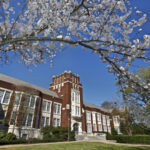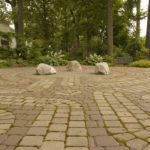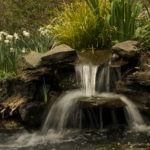Garden at Cedar Hill
Respecting a historic neighborhood and restoring its dignity
Anacostia is a historic African American neighborhood in southeast Washington, D.C., that thrived for decades. But Dianne Dale watched the once vibrant family-focused community slide into a shadow of its former self over her lifetime. Her family had roots in the community dating back to the 1890s, when Frederick Douglass, former slave and eminent abolitionist, lived in what is now the Old Anacostia Historic District. When she returned after decades of living away, she wanted to help restore the respect of the past. She started by proposing a garden that eventually became The Garden at Cedar Hill.

A garden would tangibly demonstrate in one small way a return to the dignity that existed not so long ago. It would be a physical place that her neighbors could enjoy. As president of the Anacostia Garden Club, Dianne began by partnering with the local library. The club enlisted the help of Nature Sacred, designed a garden and then hit a wall. When the community near the library heard the garden would include a bench, they protested—out of fear of what the bench might attract. Dianne didn’t give up.
Capitalizing on a rich history and stunning vista
Months later, she returned with another idea: to build the garden at Cedar Hill, the final home of Frederick Douglass, the community’s hero. His home sits high atop a hill with a spectacular view of the U.S. Capitol, the Washington Monument, the National Cathedral and the grand sweep of the capital’s wide avenues. He contemplated the issues of the day and found respite and peace on the grounds of his home.

Cedar Hill is on the National Register of Historic Places. Because it has a federal presence, its grounds are more secure. But planting a garden at Cedar Hill proved to be no easy task. The home, like the neighborhood, was in desperate need of repair.
Dianne had to gain access to the land by pushing public officials and community residents to create alliances. She started a nonprofit called Frederick Douglass Gardens, Inc., which forged a public/private partnership with the National Park Service (NPS), the entity that oversees Cedar Hill.
Five years after she approached Nature Sacred for our help, she finally had permission to plant her garden.

Open and inviting
When the National Park Service took over the site in 1970, they fenced in the Frederick Douglass house. This prevented community access to the land and the feeling of community ownership. But, to Dianne, the gardens opened up the space again and said, “Come in. You’re welcome.”

A community effort
To open the space up further and give back that feeling of ownership, Dianne involved the community. The Earth Conservation Corps (ECC), which trains at-risk kids to be environmental stewards and encourages them to earn GEDs if they don’t have high school diplomas, brought a crew to help install the garden. Dianne and volunteers were very careful to choose native, drought-resistant trees, shrubs and plants Mother Nature could take care of without a lot of help.
Every spring, schools bring students to help plant annuals. And they give especially interested children plants to take home. Sometimes children come back with their parents, which extends into another layer of the community. Dianne also invites visitors to take an active part in tending the garden, if they’d like, to pull a weed or water a tree.
Because the Garden at Cedar Hill is very visible, they draw people from the neighborhood to the historic site organically, which is sort of a backdoor way of connecting them to their history to Dianne. It’s a way to show respect for that history and part of reestablishing the community’s reputation.

Transforming a lifetime of decline
The community stands at a dangerous moment, when it could lose so much, because Anacostia has been “discovered.” It’s the last frontier of Washington, D.C.—the views are magnificent, the land is cheaper and it’s convenient to many metropolitan areas. Because most of Anacostia’s current residents have seen nothing but decline in their lifetimes, they’re apt to accept anything new that’s offered—such as a soccer stadium or even a parking lot—to get rid of what’s run down. They’re desperate. That’s when decisions are made that aren’t in the community’s best long-term interest.
But if there’s one thing Dianne learned from her experience in creating the Garden at Cedar Hill, it’s that persistence and patience pay off. Over the years, she persevered and gained the confidence to go up against bureaucracy and get things done. The Park Service began to understand that she was serious about creating a garden at Cedar Hill and not giving up. And succeed she did.
The true wonder of this public/private partnership is that the community made it happen. Citizen action in Anacostia formed that alliance with the federal government and spurred a ripple effect of restoration.
When she was working at the garden one day, she sat on the Nature Sacred bench herself and leafed through the journal to see what people had written. She came across an entry from a graduate of nearby Howard University pondering the black condition, who wrote, “What in the world would Frederick Douglass think if he came back today and saw what his neighborhood had become?”
Dianne often wondered that herself over the years. She mused, “If Frederick Douglass were to come back right now and sit here in this beautiful garden beside his restored home, he might think, ‘There’s hope.’ I know I do.”





